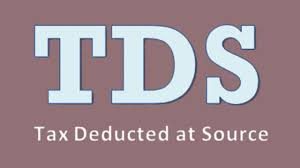 In order to penalize those who don’t file income tax returns (ITRs) despite being liable to, the government has proposed new provisions in Union Budget 2021. Under the proposed Section 206AB, in cases where a person is required to deduct (deductor) tax deducted at source (TDS) while making a payment to another person, he will be liable to deduct TDS at a higher rate in case the person receiving the payment (deductee) has not filed ITR for the previous two years.
In order to penalize those who don’t file income tax returns (ITRs) despite being liable to, the government has proposed new provisions in Union Budget 2021. Under the proposed Section 206AB, in cases where a person is required to deduct (deductor) tax deducted at source (TDS) while making a payment to another person, he will be liable to deduct TDS at a higher rate in case the person receiving the payment (deductee) has not filed ITR for the previous two years.
There are certain conditions under which TDS will be deducted at a higher rate. However, in the absence of a mechanism where deductors can check if TDS needs to be deducted at a higher rate, they may face difficulty in doing so. Let’s understand the issues and some probable solutions suggested by experts.As per the proposal, TDS will be deducted at twice the applicable rate as per the Income Tax Act or 5%, whichever is higher in case the person hasn’t filed ITR for the past two years (and the time limit for filing the ITR is also over) and a TDS of more than ₹50,000 was deducted in each of the past two years from that person. So, the deductor will have to ensure that both these conditions are fulfilled.
For example, in case you are making a payment to a contractor, you are liable to deduct TDS at the rate of 1%. In case the contractor hasn’t filed the ITR for the past two years and TDS of more than ₹50,000 was collected in each of the two years, then you will have to deduct TDS at the rate of 5% instead of 1%. In case you are paying rent of more than ₹50,000 per month, you are liable to deduct TDS at the rate of 5%. In case the person receiving rent has not filed ITR for the past two years and ₹50,000 TDS was deducted from him in each of the past two years, you will be required to deduct TDS at 10%.
The basic idea is to make more people file ITRs. The TDS so deducted can be claimed by the deductee against the overall tax liability by filing the ITR. By introducing higher TDS limits, the government wants more people to file ITRs to claim the TDS paid.
There are existing provisions under which TDS needs to be deducted at a higher rate in case of non-furnishing of permanent account number (PAN). But it has been seen that these provisions have ensured that more people get PAN cards but tax filing has not gone up. With the introduction of these provisions, it is anticipated that more people will file ITRs.
Under the provisions, the onus of deducting and submitting the TDS lies with the deductor. There are penalties in case of default. “The deductor can be held liable for the amount of tax he fails to withhold within prescribed time limits. Failure to deduct tax also attracts simple interest at the rate of 1% per month of the tax and may result in penalty equal to the amount of the tax required to be deducted,” said Gouri Puri, partner, Shardul Amarchand Mangaldas & Co.
However, in the absence of a mechanism or platform, it will be challenging for the deductor to check whether the person from whom TDS needs to be deducted meets the two conditions or not. Experts say that the deductor can ask for declarations or use the ITR acknowledgement to check if the person has filed the ITR or not.
Source: https://www.livemint.com/money/personal-finance/confusion-persists-on-how-new-tds-rules-will-be-implemented-11613320698024.html
© 2018 CA Chandan Agarwal. All rights reserved.